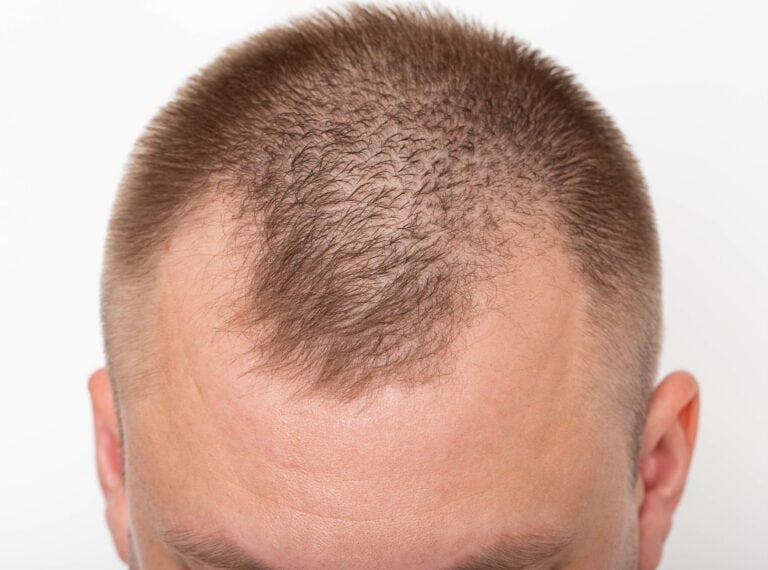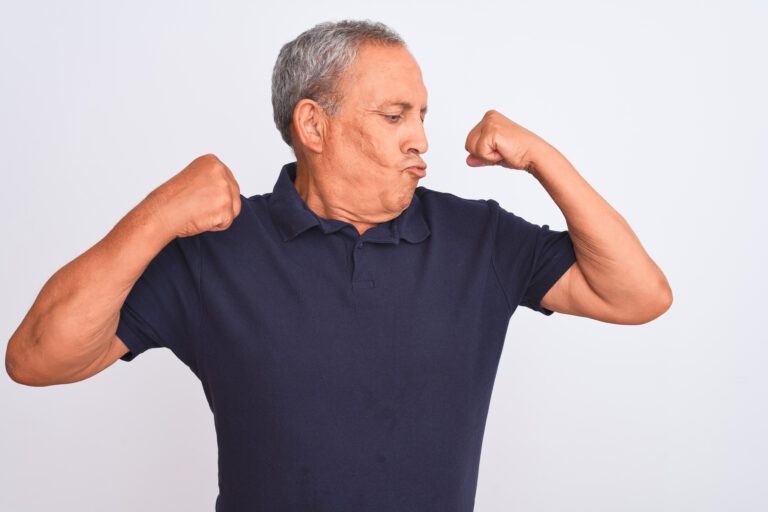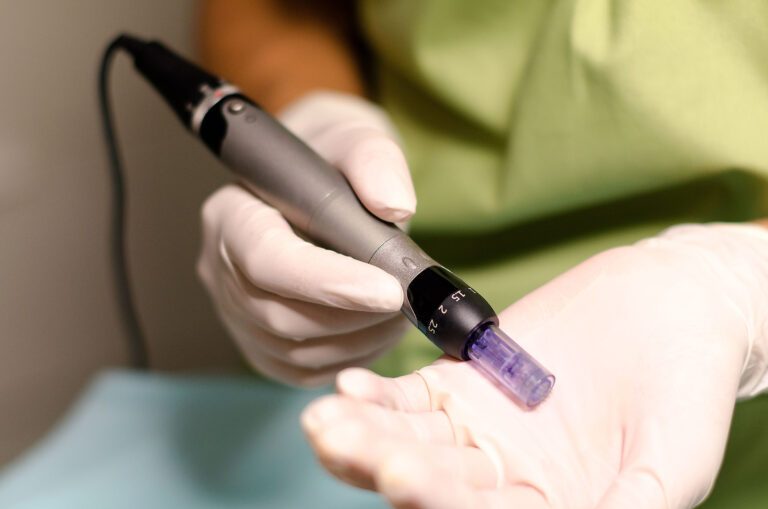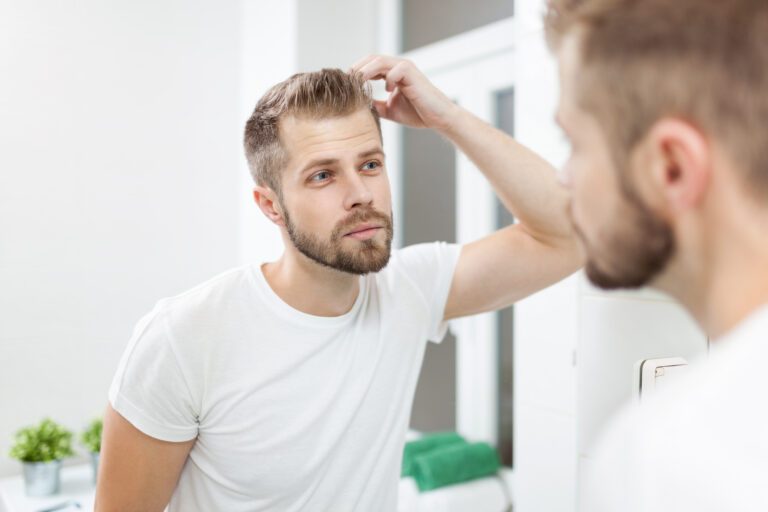Is Finasteride Available Over The Counter Without Prescription?
Finasteride is a tablet medication commonly used to treat hair loss in men. Only 1 mg of the former drug can help promote hair growth and prevent further badness.
With those tempting effects, you might wonder: can you get finasteride over the counter? Or does the former drug require a prescription?
Continue reading this article to find out the answer, as well as some over-the-counter hair loss treatments!
What Is Finasteride?
Finasteride is a medication used mainly to treat an enlarged prostate (benign prostatic hyperplasia) in adult men. It helps ease enlarged prostate symptoms, such as difficulty urinating or emptying the bladder. It also reduces the chances of prostate surgery.
What’s more, doctors prescribe this drug to treat baldness. Commercially, finasteride is sold under the names Proscar and Propecia.
So, what’s the difference between the former two drugs?
Both Proscar and Propecia have finasteride as the active ingredient. However, the former contains 5 mg, which is the dosage used to treat enlarged prostates in men.
As for the latter, it has 1 mg of finasteride. That dosage is indicated for androgenetic alopecia (male pattern baldness) treatment.
Regardless of the dosage, both medications have the same mode of action inside the body.
How Does Finasteride Work?
Finasteride works its magic by reducing the levels of dihydrotestosterone (DHT), a male sex hormone. Increased levels of the former cause male pattern baldness. How?
The male hormone shrinks the hair follicles, causing them to grow thinner and more brittle hair. Additionally, DHT shortens the hair cycle, so your hair ends up falling quicker than it should. Once the old hair falls out, DHT’s damage to the follicles makes them take longer to grow new hair. That can cause significant balding.
Naturally, your body converts 10% of testosterone, the primary male androgen hormone, into DHT daily. It does so through the action of an enzyme called 5-alpha-reductase. Finasteride inhibits the former enzyme’s action, decreasing DHT levels in the body.
Although Propecia prevents DHT’s effects on hair loss, it doesn’t treat the root cause of male pattern baldness—it prevents further hair thinning. Consequently, quitting those medications can cause hair loss like it used to happen before taking this drug.
Can Women Take Finasteride?
To this date, finasteride isn’t suitable for women or children. However, on rare occasions, finasteride might be prescribed to treat excessive hair growth in females.
Still, the drug isn’t FDA-approved because it might cause teratogenicity. For those who don’t know, teratogens are chemicals and other factors that risk fetal abnormalities and miscarriages during pregnancy.
Plus, more research is needed to determine the effectiveness of finasteride in treating female pattern baldness.
Do You Need a Prescription for Finasteride?
Yes, you need a prescription for finasteride. While the former differs from one country to another, you’ll still need a prescription to purchase Propecia in the United States.
Your healthcare provider will evaluate the degree of male pattern baldness and your medical history to determine if finasteride is a suitable treatment option.
You should never attempt to use finasteride without a prescription, as it’s unsafe for everyone and might cause serious side effects. Check with your doctor immediately if you experience any of the following symptoms:
- Rashes
- Hives
- Itchiness
- Face and lips swelling
- Breathing and swallowing difficulties
- Changes in breast size, lumps, pain, or nipple discharge
Can You Get Finasteride Without Prescription?
In the USA, as well as in most other countries, you can’t legally get finasteride without a prescription. The former can be potentially harmful if not used under the supervision of your medical care provider. That’s why you won’t find over-the-counter (OTC) finasteride available.
That said, there are other over-the-counter medications for treating hair loss. Now you might wonder: what’s the difference between prescription and OTC drugs?
The main difference is that prescription drugs require a doctor’s prescription, and you can only buy them from a pharmacy. Prescription drugs require data about how they behave inside the body in animals and humans to be FDA-approved.
As for OTC drugs, you can buy them from stores, as they have a low potential for misuse and abuse. The former also follows different FDA regulations, known as OTC Monographs, and doesn’t require additional FDA approval when updating the ingredients and labeling.
How to Get a Finasteride Prescription
Luckily, getting a finasteride prescription to treat male pattern baldness is a straightforward process.
Simply visit your local healthcare provider for an examination or schedule an appointment online. If appropriate, your doctor will prescribe finasteride so that you can use it to buy the drug from pharmacies.
You can also seek a hair specialist’s help if you’re experiencing significant balding. The dermatologist might prescribe finasteride to prevent further hair loss or to prepare for a hair transplant surgery.
What Are the Precautions for Finasteride?
Before taking finasteride, you should consider the following precautions to make an informed decision about this drug:
- Talk to your doctor about the common side effects of finasteride, such as decreased male fertility and ejaculation problems.
- Provide your medical history to your doctor, including allergies, to determine if you’re allergic to finasteride or other ingredients in the tablet.
- Tell your doctor about the medications, vitamins, herbs, or supplements you take, as they might need to change the medication dosage.
How to Use Finasteride
Typically, finasteride comes as a tablet to take orally, and you can take it once a day, with or without food. It’s also recommended to take the drug around the same time every day.
Don’t double the tables if you forgot to take finasteride. Simply skip the missed dosage and continue taking the medication according to your regular schedule.
Having said that, always follow your doctor’s prescription, even if it differs from the drug’s label. Generally, it takes at least three months before noticing any hair growth improvements.
However, you should consult your doctor about continuing the treatment if you don’t see any difference in your hair loss pattern within 12 months.
Can You Get Over-The-Counter Medications for Hair Loss?
Yes! Several over-the-counter treatments are available to treat hair loss, and some of them give similar satisfactory results to finasteride.
Here are the common OTC hair loss treatments that you can try:
Minoxidil
Minoxidil, commercially sold under the name Rogaine, is a topical medication used to stimulate hair growth.
Once you apply minoxidil to the scalp, a sulfotransferase enzyme converts it into minoxidil sulfate. The former is the active form of the drug; it shortens the telogen (dormant) hair phase.
Consequently, the drug stimulates the hair follicles to enter the anagen phase, causing hair growth. Not only that, but minoxidil prolongs the former phase and increases the hair’s length as well as diameter.
Some doctors prescribe minoxidil along with finasteride for the best hair growth results.
Hair Loss Shampoos
Like finasteride, some hair loss preventative shampoos contain chemicals that block DHT. Those treatments include saw palmetto, pumpkin seed oil, or ketoconazole as the active ingredient.
Here’s a brief explanation of each element:
- Saw palmetto: As the name implies, saw palmetto is a natural external extract from the berries of a particular palm species. Studies show that it helps lower DHT and enhance hair growth.
- Pumpkin seed oil: This natural extract also works by stopping DHT formation. A 2014 study shows that using 400 mg of pumpkin seed oil for 24 weeks can enhance hair growth in men.
- Ketoconazole: Although it’s an antifungal used to treat skin infections, a 2011 study shows that ketoconazole improves hair regrowth in androgenic alopecia patients.
Wrapping Up
As you can see, finasteride is an effective treatment for male pattern baldness.
While you can’t get over-the-counter finasteride due to the potential serious side effects, obtaining the former isn’t challenging. You simply need to schedule an examination with a dermatologist or your local healthcare provider.
That said, you can find several effective over-the-counter medications, like minoxidil. When used with finasteride, it may help you prevent further hair loss and improve hair regrowth!







